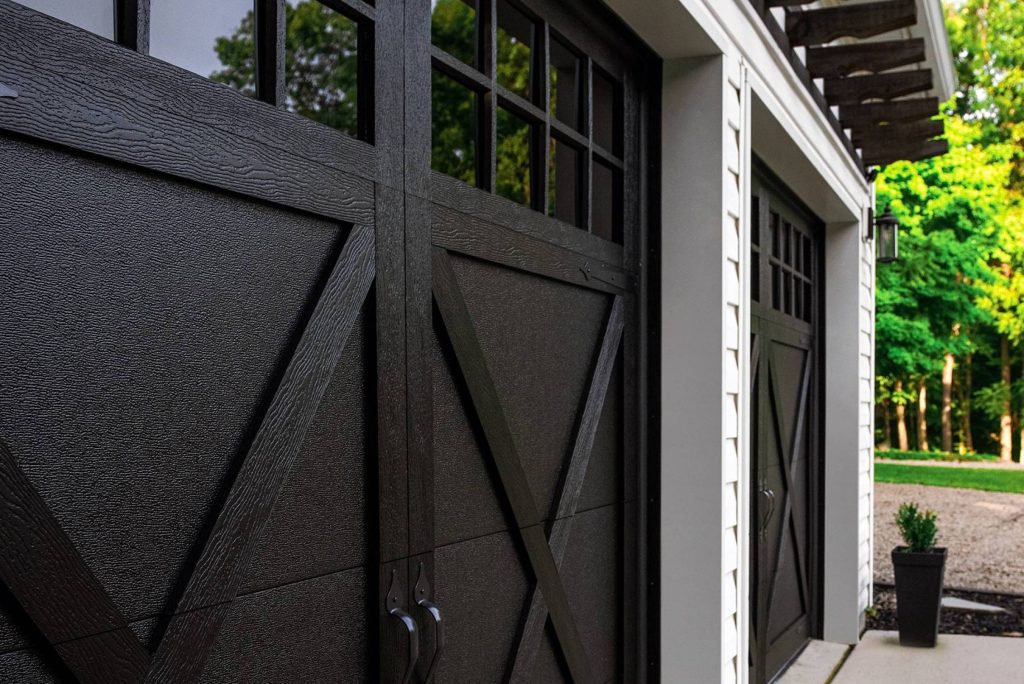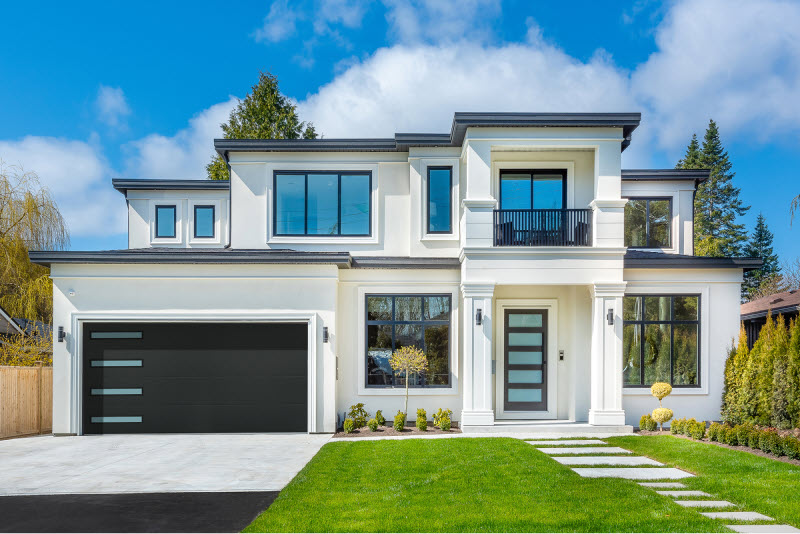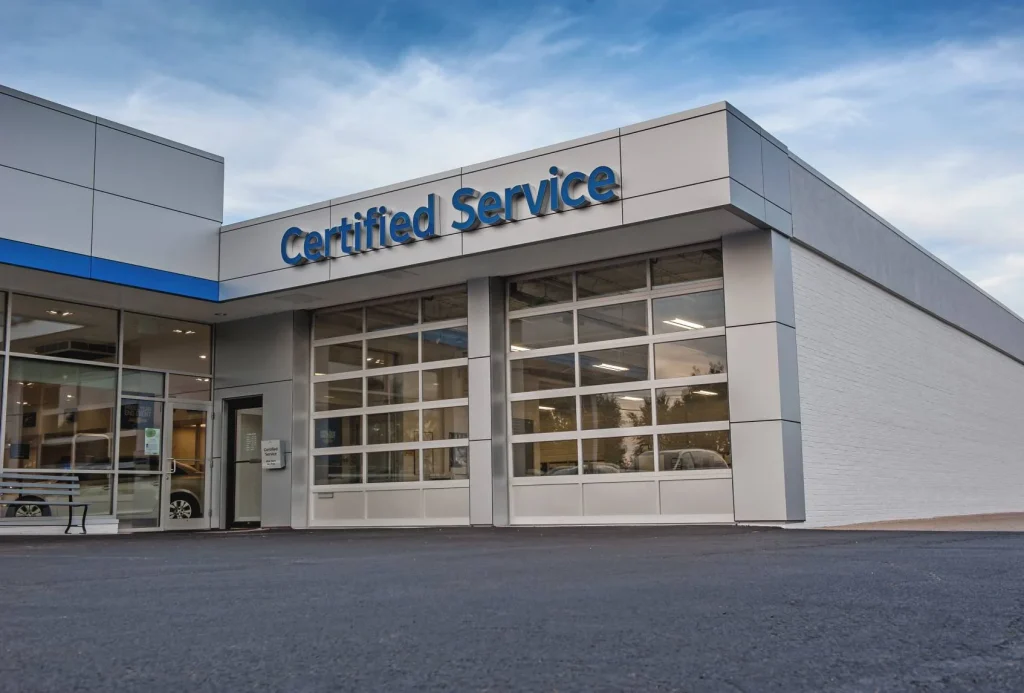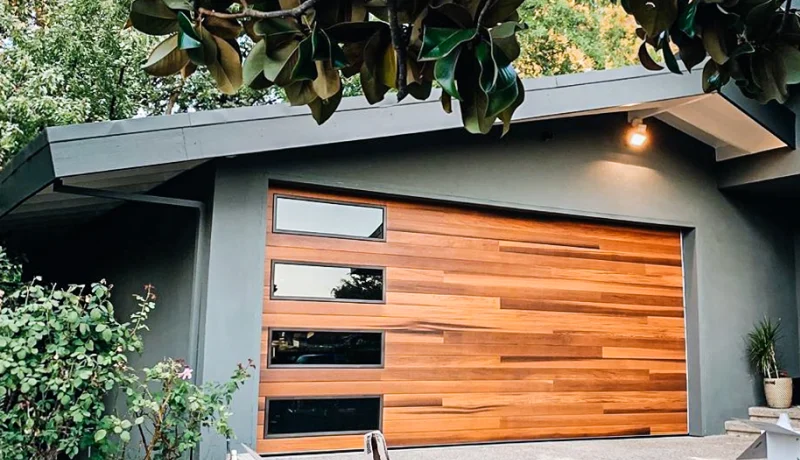Garage Door Seal in Northville, MI
Weatherproofing Solutions for a Better Insulation
Locally Based, Regionally Trusted
Since 2017
Schedule A Service Request
We Serve Businesses In And Around The Following Cities:
About Garage Door Seals
Comprehensive Guide to Garage Door Seal for Commercial Properties in Northville
Understanding the Importance of Garage Door Seal
In the charming city of Northville, commercial properties range from bustling retail stores to expansive industrial warehouses. Each of these properties plays a crucial role in the local economy, and ensuring they are well-maintained is critical for business success. Among the numerous maintenance tasks involved, the importance of a garage door seal stands out for many property managers and business owners. A well-functioning garage door seal might not be the most obvious component of commercial property maintenance, but its impact is integral to operational efficiency and cost management.
Garage door seals are pivotal in protecting the interior of a building from the detrimental effects of weather conditions. Unsealed gaps at the bottom of a garage door allow drafts, moisture, pests, and even dust to invade, potentially damaging goods and equipment stored within. For businesses in Northville, where the seasonal climate can vary dramatically, having a robust sealing system ensures that heating and cooling systems function more efficiently, thereby reducing energy costs. The ongoing benefits of a properly maintained door seal for garage doors extend far beyond the initial installation, impacting overall employee comfort and inventory preservation, which in turn enhances business performance.
The Process of Securing a Garage Door Seal
Securing a garage door seal involves a meticulous process, designed to ensure that the seal provides optimal protection against external elements. This process begins with a thorough assessment to identify the specific needs of the commercial garage door. At this stage, professionals inspect the existing garage door seal for signs of wear and determine the appropriate type needed for effective sealing. This might include a combination of various seals, such as the garage door under seal or garage door weather stripping, depending on the door's design and material.
Following the assessment, the next step is the selection of materials. Quality material ensures durability and longevity, crucial for maintaining the structural integrity of garage door seals over time. Common materials used include rubber, vinyl, and silicone due to their flexibility and resistance to weather extremes. These materials effectively cater to Northville’s varied climate, offering a reliable barrier against the elements.
The installation process follows, requiring precision to align the seal properly with the bottom of the garage door. Skilled professionals, like those from D&J Contracting, ensure that the garage doors seals bottom doors seamlessly to the ground, preventing any breaches that air, water, or pests could exploit. The meticulous craftsmanship involved is what makes this step integral to achieving a perfectly sealed environment within the commercial garage space.
Benefits of Installing a Garage Door Seal
The advantages of installing a high-quality garage door seal are manifold, particularly for commercial premises in Northville. Firstly, the energy efficiency gained from a well-sealed door cannot be overstated. Minimizing air leaks helps maintain consistent indoor temperatures, which is particularly beneficial in controlling heating and air-conditioning needs, leading to substantial energy savings.
For businesses dealing with sensitive stock or machinery, a garage door seal is indispensable in preserving the integrity of these assets. It shields them from potential water ingress and excessive humidity, which could otherwise lead to spoilage or damage. Furthermore, by deterring pests and rodents, a seal on a garage door aids in upholding stringent hygiene and safety standards required by many commercial operations.
Operational efficiency also sees a boost with the installation of a proper garage door seal. Employees work in more comfortable conditions, undistracted by exterior noise or fluctuating temperatures. Moreover, the reduced maintenance need on HVAC systems due to mitigated external influences reduces operational downtime, contributing to smoother business processes and enhanced productivity.
Real-World Applications in Commercial Settings
Across Northville, various commercial entities rely on effective garage door seals to safeguard their infrastructures and streamline operations. Consider a local manufacturing firm storing sensitive machinery and materials invaluable to their production lines. The risks posed by environmental factors such as moisture and temperature fluctuations necessitate the use of efficient garage door seals, preventing costly damages and ensuring uninterrupted production cycles.
Retail complexes too, with their reliance on consistent indoor climates to provide customer comfort, benefit significantly from sturdy garage door seals. These seals contribute to maintaining an ambient temperature, crucial in lowering operational costs and boosting customer satisfaction. Moreover, they act as the first line of defense against pests, preserving sanitation standards across food and clothing retail sectors.
Warehouses functioning in logistics find garage seals indispensable for maintaining the quality of stored goods. In Northville, where temperature and humidity levels can vary, maintaining a stable environment is crucial for goods that are sensitive to such changes. By preventing drafts and moisture, warehouse managers can ensure inventory remains in prime condition, facilitating timely and cost-efficient distribution.
Selecting the Right Professionals for Installation
The installation of garage door seals should be entrusted to proficient contractors to ensure optimal results. Experienced professionals like those at D&J Contracting possess the necessary skills and knowledge to tailor solutions that meet the unique requirements of each commercial property in Northville. Their expertise includes selecting the right materials, precise installation, and post-installation maintenance, ensuring the seal's effectiveness and longevity.
Partnering with a reputable contractor also provides peace of mind as they adhere to the highest standards of service and safety. These experts use state-of-the-art tools and techniques to deliver a seamless installation process, minimizing disruptions to business operations. Moreover, they offer valuable advice on maintaining the garage door seal, prolonging its life, and thus yielding better returns on investment.
Why Northville Businesses Should Prioritize Garage Door Seals
The emphasis on garage door seals stems not only from the immediate practical benefits but also from long-term financial savings. In Northville, where environmental conditions can impose significant demand on internal climate controls, the role of a garage door seal is paramount in energy conservation. Businesses that invest in these seals quickly realize reductions in energy bills, contributing positively to their bottom line.
Additionally, by enhancing the structural integrity of a commercial property, garage door seals decrease the likelihood of damage-related costs, ensuring the smooth operation of day-to-day activities. This foresight in maintenance planning can safeguard businesses from unforeseen expenses, allowing them to allocate resources more efficiently
Commercial enterprises that value sustainability and operational efficiency should not overlook the significance of a reliable garage door seal. The added layer of security and insulation they provide is a strategic investment in the longevity and success of the business. Selecting professional installation services such as those offered by D&J Contracting not only guarantees quality but also reinforces a business's commitment to sustainable practices and operational excellence.
The decision to secure an effective garage door seal is a testament to responsible management, promising protection and efficiency for commercial entities in Northville. Leveraging expert services ensures the investment yields robust returns in terms of energy efficiency, asset protection, and operational proficiency. Understanding and applying this aspect of facility management prepares businesses to thrive in a competitive, dynamic market.
Garage Door Seals Gallery



Call Us Today to receive your Free Quote for Garage Door Seal in Northville
Serving: Northville, Michigan

About Northville, Michigan
Northville was first settled by European Americans in 1825, and was incorporated as a Village in 1867. It was not incorporated as a City until 1955. Originally one of two communities within Plymouth Township, Northville Township split off in 1898 to form its own township.
The first land patent in the Northville area was granted to Gideon Benton in 1823; the current Cass Benton Park is located here. The first settlers did not arrive, however, until 1825. Many of these first settlers were originally from central and western New York State, with ancestors in New England. Others came from the nearby, already settled Plymouth community to Northville.
Among these early settlers were Alanson Aldrich, followed by Alvale Smith, who sold his property to John Miller. Miller built the first mill in Plymouth Township, sometime between 1825 and 1828. Mill Race Historical Village is now preserved at this site. Many employees of the mill began to build their houses near it. Northville was named for its relation north of Plymouth.
In 1827, Northville was home to a post office, and Gideon Benton was the US postmaster. Also in 1827, J.F. Davis, became the first resident doctor in Northville. A tailor, tavern, shoe shop, and two blacksmiths also started business in the village. Many of Northville's first settlers' surnames became namesakes for contemporary street names today. These include Rufus Thayer Jr. (Thayer Blvd.), Joseph Yerkes (Yerkes St.), Daniel and Samuel Cady (Cady St.), William Dunlap (Dunlap St.), and other settlers. The first church was constructed in 1836 by a Methodist congregation.
Northville continued to grow throughout the Victorian era. This is evident in the architecture around downtown where many homes are in the Queen Anne style. Northville's Victorian heritage is celebrated every September in the Victorian Festival, which was recently rechristened the "Heritage Festival".
The first schoolhouse in Northville opened in 1853 and was taught by Jacob Ramsdell. Northville was incorporated as a village in 1867 from a portion of Plymouth Township. By the end of the nineteenth century, it had established a public school system headed by a superintendent.
Henry Ford purchased a factory in Northville and moved machinery from plants in the area to the factory in 1919. Known as the Northville Valve Plant, the plant was rebuilt in 1936, and enlarged in 1956. The plant provided valves for every Ford, Mercury, and Lincoln vehicle, except for the Lincoln Continental, until closing and being sold in 1981. The building now houses offices and a health club. In 1925, the Penniman-Allen Theater opened downtown and remained open through the mid-70's. The theater eventually closed, but opened again in 1978 as the Marquis Theater and is now home to live children's theater. When Northville was more rural, skiing was popular and tournaments were held often. In 1944, Northville Downs opened as the first nighttime harness racing track in Michigan. The Downs were built on the site of the former Wayne County Fair, where Joe Louis trained in 1939 for his World Championship later that same year. Northville Downs stayed in continuous operation from 1944 to 2024 and was located at the corner of Center Street and 7 Mile Road.
The city was incorporated in 1955 along the boundaries of the Village of Northville, and grew rapidly during the prolonged period of white flight from the City of Detroit in the middle and late 20th century. The Village of Northville included portions of Novi Township in Oakland County and Northville Township in Wayne County. Over the next several years, the city boundaries expanded through annexation of portions of Novi Township and the Village of Novi both east and west of the city and north of Baseline Road. The city's northern boundary was fixed by the incorporation of the Village of Novi into the City of Novi in 1969. The city has also annexed small portions of Northville Township, the most recent of which was an expansion of the Rural Hill Cemetery. Northville Township's status as a Charter Township generally precludes the city from annexing any significant portion of the Township. The most recent annexation was permitted by the Township in order for the city to expand the city-owned and operated cemetery.
In 1889, the Ladies Library Association was organized by Mary Lapham, and had 1,200 books and 150 members by 1892. The library was located in the former Young Men's Hall until 1964, when it moved temporarily to the new City Hall. In 1975, the library moved again temporarily to the Northville Square Mall; in 1980 it returned to City Hall. In 1996, it moved into the newly built Northville District Library.
According to the United States Census Bureau, the city has a total area of 2.06 square miles (5.34 km), of which 2.04 square miles (5.28 km) is land and 0.02 square miles (0.05 km) (0.97%) is water.
The city is divided almost equally between Oakland County to the north and Wayne County to the south. Eight Mile Road (or Baseline Road) serves as the county line. Of the city's 2.06 square miles (5.34 km) in area and population of 5,970, 1.06 square miles (2.75 km) (51.4%) and 2,739 residences (45.9%) are within Wayne County. Oakland County contains 1.00 square mile (2.59 km) of land (48.6%) and 3,231 residents (54.1%).
| Census | Pop. | Note | %± |
|---|---|---|---|
| 1860 | 620 | — | |
| 1870 | 626 | 1.0% | |
| 1880 | 934 | 49.2% | |
| 1890 | 1,573 | 68.4% | |
| 1900 | 1,755 | 11.6% | |
| 1910 | 1,665 | −5.1% | |
| 1920 | 1,738 | 4.4% | |
| 1930 | 2,566 | 47.6% | |
| 1940 | 3,032 | 18.2% | |
| 1950 | 3,240 | 6.9% | |
| 1960 | 3,967 | 22.4% | |
| 1970 | 5,400 | 36.1% | |
| 1980 | 5,698 | 5.5% | |
| 1990 | 6,226 | 9.3% | |
| 2000 | 6,459 | 3.7% | |
| 2010 | 5,970 | −7.6% | |
| 2020 | 6,119 | 2.5% | |
| U.S. Decennial Census | |||
In 2007, the median income for a household in the city was $98,054, and the median income for a family was $123,509.). Males had a median income of $75,126 versus $41,343 for females. The per capita income for the city was $43,454. About 1.0% of families and 1.6% of the population were below the poverty line, including 2.2% of those under age 18 and 2.2% of those age 65 or over.
As of the census of 2010, there were 5,970 people, 2,596 households, and 1,643 families living in the city. The population density was 2,912.2 inhabitants per square mile (1,124.4/km). There were 2,767 housing units at an average density of 1,349.8 units per square mile (521.2 units/km). The racial makeup of the city was 93.7% White, 1.6% African American, 0.1% Native American, 2.6% Asian, 0.6% from other races, and 1.4% from two or more races. Hispanic or Latino residents of any race were 2.2% of the population.
There were 2,596 households, of which 27.7% had children under the age of 18 living with them, 53.8% were married couples living together, 7.4% had a female householder with no husband present, 2.1% had a male householder with no wife present, and 36.7% were non-families. 32.3% of all households were made up of individuals, and 11.4% had someone living alone who was 65 years of age or older. The average household size was 2.29 and the average family size was 2.94.
The median age in the city was 45.3 years. 22% of residents were under the age of 18; 5.5% were between the ages of 18 and 24; 22.1% were from 25 to 44; 34.3% were from 45 to 64; and 16.1% were 65 years of age or older. The gender makeup of the city was 47.9% male and 52.1% female.
As of the census of 2000, there were 6,459 people, 2,720 households, and 1,795 families living in the city. The population density was 3,239.1 inhabitants per square mile (1,250.6/km). There were 2,801 housing units at an average density of 1,404.7 units per square mile (542.4 units/km). The racial makeup of the city was 96.11% White, 0.39% African American, 0.19% Native American, 1.86% Asian, 0.09% Pacific Islander, 0.59% from other races, and 0.77% from two or more races. Hispanic or Latino of any race were 1.64% of the population. In more detail, 18.7% were of German, 14.1% were of Irish, 12.3% were of Polish, 10.1% were of English, and 7.4% were of Italian ancestry.
There were 2,720 households, out of which 29.9% had children under the age of 18 living with them, 58.3% were married couples living together, 5.8% had a female householder with no husband present, and 34.0% were non-families. 30.2% of all households were made up of individuals, and 9.7% had someone living alone who was 65 years of age or older. The average household size was 2.36 and the average family size was 2.97.
Northville Public Schools is the local school district. Amerman Elementary School and Hillside Middle School are in the Northville city limits. Additionally, portions of Northville are zoned to Moraine Elementary School and Silver Springs Elementary School, both in Northville Township. Additionally some sections of Northville are zoned to Meads Mill Middle School in Northville Township. Northville High School in Northville Township is the zoned high school for all of the Northville District.
Our Lady of Victory School, a Catholic K-8 school, is in Northville. The church established the school in 1950. The first facility, which opened in 1952, had four rooms. An addition with four classrooms and an office was installed for $85,000 (~$663,662 in 2023) in 1961. An additional two classrooms and a connecting structure to the worship facility were added in 1985. The current 19 classroom facility opened in 2006. As of 2020 the school has over 450 students. Catholic schools are under the Roman Catholic Archdiocese of Detroit.
St. Paul's Lutheran School, a Lutheran K-8 school, is also in Northville. The affiliated church, founded in 1896 by Rev. John J Goulding, had established, dis-established, and then, in 1959, re-established the school. Post-1959 it was initially in a building with two rooms. Its current facility has ten rooms.
